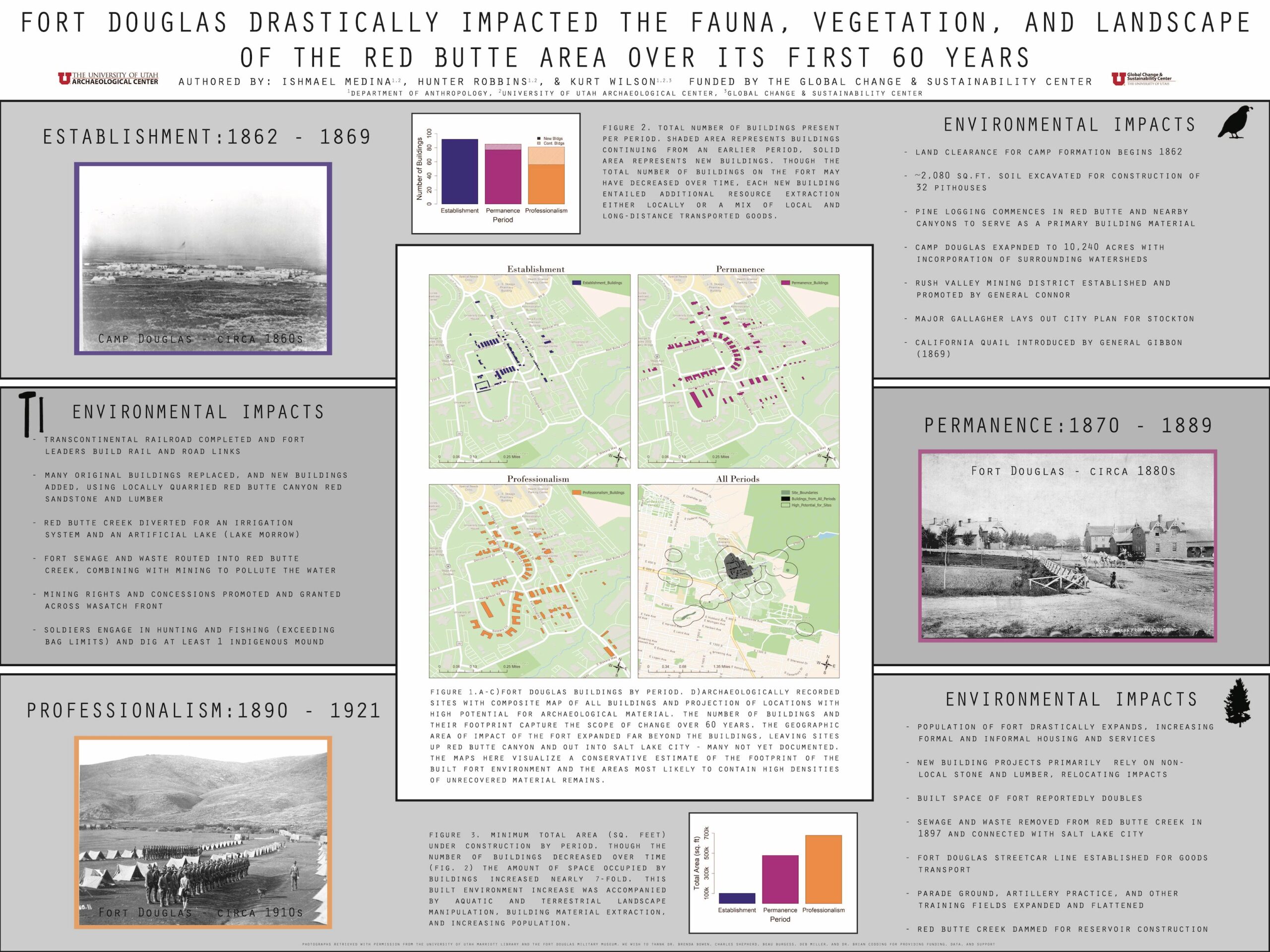Fort Douglas drastically impacted the fauna, vegetation, and landscape of the Red Butte area over its first 60 years
–Ishmael Medina, Hunter Robbins, and Kurt Wilson
[bs_collapse id=”collapse_bb86-afd7″]
[bs_citem title=”Bio” id=”citem_e610-6c22″ parent=”collapse_bb86-afd7″]
Ishmael Medina (masters), Hunter Robbins (undergraduate), and Kurt Wilson (PhD) are all students in the Anthropology Department, affiliated with the University of Utah Archaeological Center, and work with Dr. Brian Codding. They share an interest in how climate change influences behavior, human interactions with local environments, and in understanding the extractive dynamics of human behavior.
[/bs_citem]
[bs_citem title=”Abstract” id=”citem_eca8-96a7″ parent=”collapse_bb86-afd7″]
The history of U.S. Western fort building has been well documented, however less is known about the environmental impacts of these endeavors. Here we document the changing environmental impacts across the first 60 years of Fort Douglas’ existence (1862-1921) as a case study. The built environment alone increased 7-fold over the those first 60 years. Individuals associated with Fort Douglas introduced a new species of fauna, extracted local lumber and red sandstone for heating and building, diverted waterways for irrigation, cleared fields for maneuvers and training, and expanded road and railways. Increasing requisitions of materials from outside the local area further expanded the impact beyond the Salt Lake valley. Extrapolated to other western forts, the impact of Fort Douglas on the local environment suggests forts had a significant influence on altering the flora, fauna, and shape of environments across the U.S. west.
[/bs_citem]
[bs_citem title=”Audio Narrative” id=”citem_780c-0f71″ parent=”collapse_bb86-afd7″]
Here we investigated how the actions taken by the U.S. military during the first 60 years of Fort Douglas’ existence impacted the local environment. We found that the amount of building space increased from 100,000 to 700,000 square feet. The local impact may have been most severe during the Permanence Period (1870 – 1889) when most buildings were replaced or built new using lumber and sandstone taken from the local area, soldiers over-hunted the area, the Fort’s sewage and waste was dumped in Red Butte Creek, and fort commanders promoted mining expansion along the Wasatch.
- Listen to Kurt describe this project:
[/bs_citem]
[/bs_collapse]

